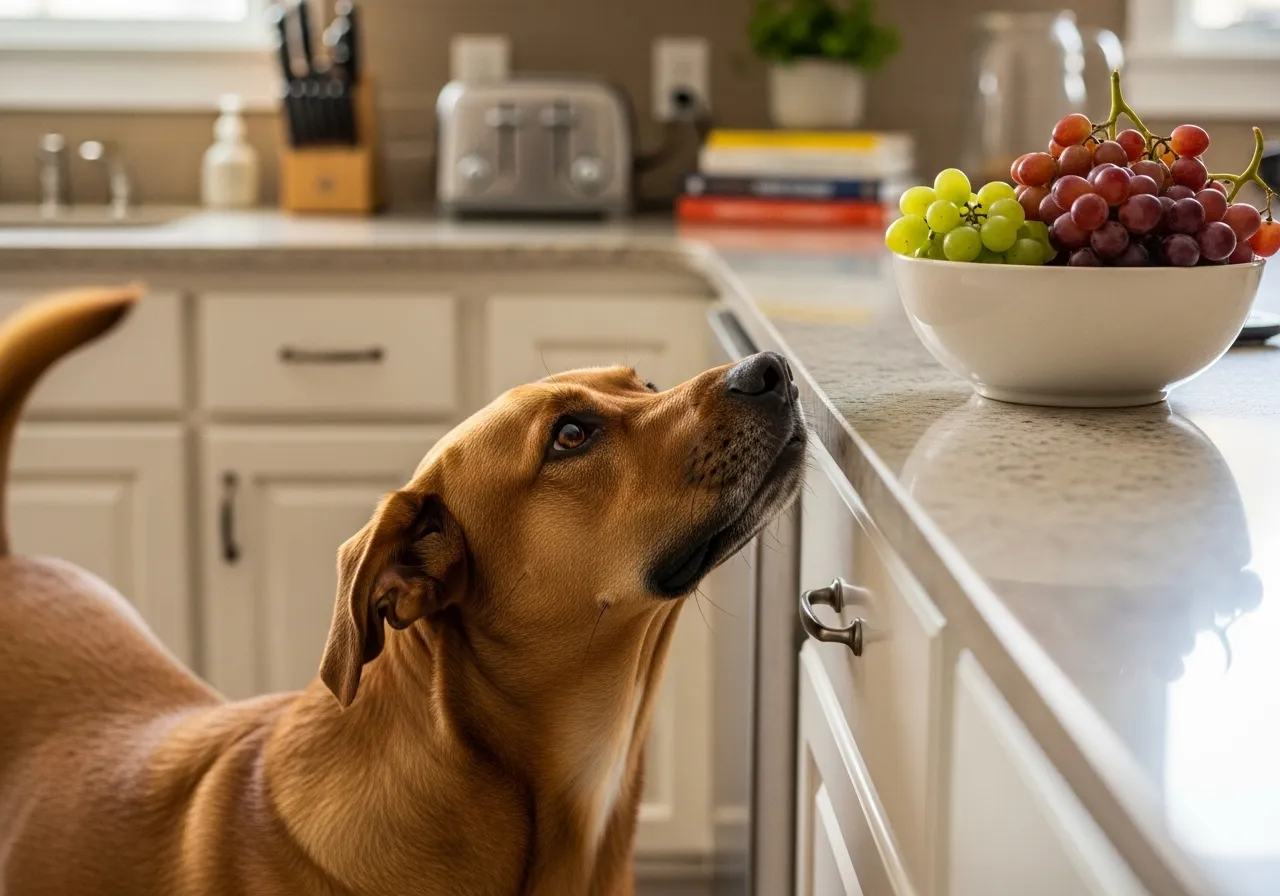
F: Foods That Are Toxic to Pets
Beyond chocolate, many other “people foods” can be dangerous for our animal companions. Keeping pets safe at home means securing your pantry and being mindful of dropped food. This is not an exhaustive list, but it covers some of the most common and dangerous items.
Grapes and Raisins: These fruits can cause sudden, acute kidney failure in dogs. The exact toxic substance is still unknown, and toxicity is not dose-dependent; even a single grape can be fatal for some dogs. There is no way to predict which dog will be sensitive.
Onions, Garlic, Chives, and Leeks: All members of the Allium family are toxic to both dogs and cats. They can cause damage to red blood cells, leading to a form of anemia. Signs may not appear for several days and include weakness, lethargy, pale gums, and an elevated heart rate. Garlic is considered more potent than onion.
Macadamia Nuts: These nuts can cause weakness, vomiting, tremors, and hyperthermia (elevated body temperature) in dogs. Symptoms typically appear within 12 hours of ingestion and can last for 12 to 48 hours.
Xylitol: This is one of the most serious threats. Xylitol is an artificial sweetener found in hundreds of products, including sugar-free gum, candy, baked goods, peanut butter, and even some medications and dental products. In dogs, it causes a rapid, life-threatening drop in blood sugar (hypoglycemia) and can lead to acute liver failure. Always check labels for this ingredient.
Fatty Foods: While not directly toxic, high-fat foods like bacon, gravy, and fatty meat scraps can trigger pancreatitis in dogs. This is a painful and serious inflammation of the pancreas that requires veterinary treatment. Some breeds, like Miniature Schnauzers, are predisposed to this condition.
A Note on Treats and Nutrition
Even safe human foods should be given in moderation. A core principle of pet nutrition is that treats—whether commercial or human food—should not make up more than 10% of a pet’s total daily caloric intake. Overfeeding treats can lead to weight gain, nutritional imbalances, and begging behavior. Managing your pet’s weight through proper portion control is a cornerstone of preventive care. Your veterinarian can help you determine the right number of calories for your pet’s age, breed, and activity level. You can use a Body Condition Score (BCS) chart, a simple visual tool, to assess if your pet is at a healthy weight.















